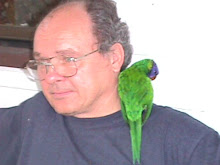 Brown Falcon
Brown Falconimage from: naturescrusaders.wordpress.com
There was once an old Medieval custom practiced throughout England, if indeed not throughout the length and breadth of Europe, of walking the parish boundaries- no doubt lead by the local parish priest. Its roots are buried in the dimmest recesses of human consciousness; ownership, familiarity, defence, etc. Back in my days in Staffordshire, when I penned a regular weekly column [Our Heritage] for the now defunct Rugeley Times, I attempted to revitalise the tradition but met with a number of seemingly unsurmountable obstacles: only Fay and I turned up on the scheduled date at the appointed starting point and before too long it became painfully apparent that much of where our ancestors would have trodden was now the jealously-protected property of the National Coal Board, along with a number of private residences at other critical points. It was no longer possible to follow in the Medieval footsteps of our forefathers.
It is however entirely possible to walk the boundaries of my property on the outskirts of Nanango in Queensland, albeit on a reduced scale: 7½ acres doesn’t quite seem to have the same awe as walking around an entire Medieval parish boundary. Nevertheless that’s exactly what Fay and I do on occasional mornings throughout the year – although in all honesty we are more likely to complete different parts on different days. Complete circuits are labourious and time-consuming, especially along the south west quadrant which is overgrown- to encourage the skulking types.
We were part way through a boundary walk when we came across the White-browed Scrubwrens [see an earlier blog] amidst some of the re-emergent understorey in the south west quadrant. We were again [Saturday 20] part way through an identical walk, albeit a little later in the day, when the Noisy Miners alerted us to the presence of a raptor in the immediate area. Miners have a particular call to warn of raptors, it differs from their more general alarm call.
We stopped, we looked and sure enough there it was, a Brown Falcon Falco berigora being escorted off the premises by a small mob of clamourous Noisy Miners. Not a new Backyard List species as we’d recorded this particular falco on two previous occasions but nevertheless a spectacular cameo to behold- almost as entertaining as the incident during our Nathan Road Wetlands [Redcliffe] days when we observed a small Willie Wagtail standing on the back of, and severely scolding, a Swamp Harrier.
Oddly enough, even later that day, as we drove along Berlin Road, we saw another Brown Falcon. This length of road had been a regular spot for the falcon last year.
 Collared Sparrowhawk
Collared Sparrowhawkimage from: eremaea.com
As if the presence of one raptor wasn’t enough excitement for a weekend, on Sunday [21 November] we were busily filling a trench when yet again the noisy Miners warned of the presence of a raptor. Sure enough, a magnificent Collared Sparrowhawk Accipiter cirrocephalus drifted into view – and just as speedily drifted out as it was surrounded by a variety of smaller species all eager to see the back of this particular preditor
And yet, the raptorial gem of the weekend belongs in my other blog:
http://www.birdingsouthburnett.blogspot.com/











.jpg)
